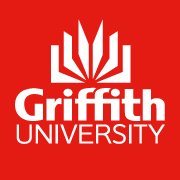Brief description
The scavenging potential was measured and the assemblage was sampled in nine estuaries in southeast Queensland, spanning 200 km of coastline. The EHI is calculated for 19 estuaries within this region (EHMP 2007). The estuaries were haphazardly selected so that they spanned the region and represented the full range of EHI values, from 0.2 to 1.0. To reduce spatial confounding among estuaries, the sites selected within each estuary were restricted to being within 7 km of the mouth and having extensive sections of muddy mangrove habitat.
Full description
Sampling;Platters -Platters were used to measure scavenging rates. They were made from steel wire bent into a ring (400 mm dia.). Honeycomb mesh netting (holes: 4 mm) was threaded onto the ring such that a cone was formed when a 220g weight was attached to the centre of the netting. A spherical float was attached to the ring in three places so that the platters remained perpendicular to the float line when retrieved but lay flat on the substratum whilst soaking. Two undamaged pilchards (Sardinops sagax) were used as carrion for each platter. On retrieval of the platters from the estuary, any remaining carrion was collected and weighed. For each platter, the proportion of carrion scavenged during the soak time was calculated.BRUVS -The assemblage of scavengers was recorded using baited remote underwater videos (BRUVs). Water proof camera housings were made from PVC gas pressure pipe and clear acrylic. A water proof seal was achieved by applying pressure to a single O-ring (5 mm dia.) which separated the two parts of the housing. Snap locks held the two parts in place. The housing was mounted on a plywood platform. A PVC tube extended 500 mm from the platform and terminated with a 200 × 200 mm carrion platter (4 mm mesh). This platter was raised 60 mm above the level of the platform so that it did not bury in the sediment when the platform was resting on the substratum (Figure 4.2). A Sony Mini-DV camcorder (DCR-HC26e) was placed inside the housing and recorded activity in the field of view for 60 – 90 minutes. In clear water, the horizontal field of view was 60 cm at the carrion net. When deployed at night, the carrion platter was illuminated with an 8 LED torch, which was covered with red cellophane (peak transmittance λ > 680 nm) because many fish and crustacea are unresponsive to red and far red light (Cronin and Forward 1988, Cappo et al. 2004). The torch was positioned to minimise backscatter. Two undamaged pilchards (Sardinops sagax) were used as carrion for each BRUV. Platters and BRUVs were separated from each other by at least 60 m to increase independence of samples.Experimental design;Over six days (9 – 15 Mar 2007), sampling was done once in each of the nine estuaries. It was not possible to sample all estuaries on the same day because of the large spatial scale. Platters were deployed during a flooding tide within a 2 km stretch of each estuary, and were separated by at least 60 m. Fifteen platters in total were available, they were split into two groups and simultaneously soaked in the estuaries for 30 min (n = 8 platters per estuary) or 90 min (n = 7). The preliminary power investigations described in Chapter 4 indicated that a minimum of 7 platters were necessary to stabilise the variance around the mean proportion scavenged in a sampling event. At the same time and in each estuary, three BRUVs were deployed in a similar location to the platters. Scavenging activity was recorded for 90 min. These data provided information about the proportion of carrion scavenged by individual taxa
Notes
Ecosystem Health Index Scores (as per EHMP 2007) Carrion scavenged Scavenging assemblage (13 taxa)
Data time period: 09 03 2007 to 15 03 2007
Spatial Coverage And Location
text: Nine estuaries;Noosa RiverMaroochy RiverMooloolah RiverNorth Pine RiverOxley CreekTingalpa CreekAlbert RiverCoomera RiverCurrumbin Creek
User Contributed Tags
Login to tag this record with meaningful keywords to make it easier to discover


